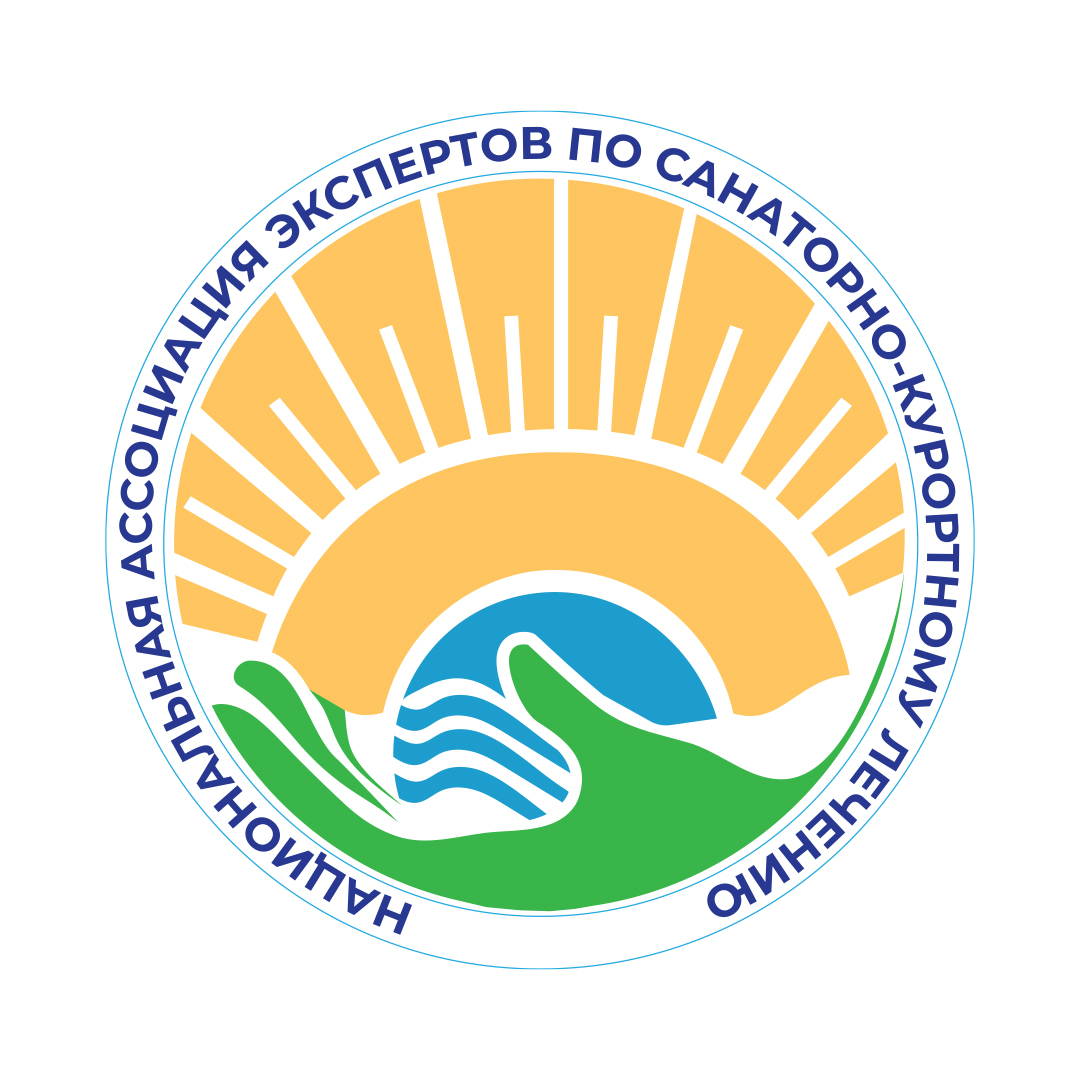Выпуск 24-1, 2025
Обзорная статья
Современные возможности лабораторной диагностики стресса: обзор
* ![]() Пёхова Я.Г.,
Пёхова Я.Г., ![]() Кузюкова А.А.,
Кузюкова А.А., ![]() Марченкова Л.А.
Марченкова Л.А.
Национальный медицинский исследовательский центр реабилитации и курортологии Минздрава России, Москва, Россия
РЕЗЮМЕ
ВВЕДЕНИЕ. Последствия стресса негативно влияют как на физическое, так и на психическое здоровье. В последнее время наблюдается резкий рост интереса к изучению доказательных методов диагностики стресса и эффективных вмешательств по его коррекции.
ЦЕЛЬ. Комплексная оценка современных возможностей объективизации стресса при помощи лабораторной диагностики его маркеров по данным литературных источников.
МАТЕРИАЛЫ И МЕТОДЫ. Для отбора публикаций были изучены базы данных PubMed, Web of Science (Web of Science Core Collection и Medline), Cochrane Library databases, включались данные метаанализов и обзорных статей, полнотекстовые статьи, исследующие связь между лабораторными биомаркерами и стрессом. Глубина поиска публикаций составила 10 лет, с 2014 по 2024 г., также в обзор был включен ряд более ранних основополагающих работ по нейрофизиологии стресса.
РЕЗУЛЬТАТЫ И ОБСУЖДЕНИЕ. В настоящее время прослеживается тенденция роста заинтересованности ученых в биологической основе проявлений стресса, что отражается на увеличивающемся количестве публикаций по кортизолу и дегидроэпиандростерону (ДГЭА) за последние 10 лет. В обзоре отражен современный взгляд на роль лабораторных маркеров в диагностике стресса. Описаны такие биомаркеры, как кортизол (уровень всплеска после пробуждения, средний уровень кортизола в течение дня, суточная кривая кортизола, кортизол в волосах), альфа-амилаза слюны, ДГЭА и др., проанализирована информация об их чувствительности и специфичности в верификации острых и хронических стрессовых состояний.
ЗАКЛЮЧЕНИЕ. Кортизол является наиболее надежным и часто используемым лабораторным маркером как острого, так и хронического стресса, при этом изучение других потенциальных биомаркеров продолжает расти. Психометрические опросники и методы функциональной диагностики, отражающие степень симпатической активации, широко применяются в диагностике стресса. Комплексное использование различных инструментов диагностики, включая лабораторные биомаркеры стресса, обеспечит мультимодальный подход, будет способствовать созданию более полной картины стрессового ответа и позволит повысить степень верификации стрессовых состояний.
КЛЮЧЕВЫЕ СЛОВА: стресс, хронический стресс, биомаркеры, кортизол, кортизол слюны, кортизол мочи, кортизол в волосах, альфа-амилаза слюны, дегидроэпиандростерон, симпатоадреналовая система, гипоталамо-гипофизарно-надпо- чечниковая ось
ДЛЯ ЦИТИРОВАНИЯ:
Пёхова Я.Г., Кузюкова А.А., Марченкова Л.А. Современные возможности лабораторной диагностики стресса: обзор. Вестник восстановительной медицины. 2025; 24(1):67–74. https://doi.org/10.38025/2078-1962-2025-24-1-67-74 [Pehova Ya.G., Kuzyukova A.A., Marchenkova L.A. Advanced Capabilities for In Vitro Stress Diagnostics: a Review.Bulletin of Rehabilitation Medicine. 2025; 24(1):67–74. https://doi.org/10.38025/2078-1962-2025-24-1-67-74 (In Russ.).]
ДЛЯ КОРРЕСПОНДЕНЦИИ: Пёхова Яна Геннадьевна,, Е-mail: pehovayg@nmicrk.ru
Список литературы:
- Engert V., Linz R., Grant J.A. Embodied stress: The physiological resonance of psychosocial stress. Psychoneuroendocrinology. 2019; 105: 138–146. https://doi.org/10.1016/j.psyneuen.2018.12.221
- Chrousos G.P. Stress and disorders of the stress system. Nat Rev Endocrinol. 2009; 5(7): 374–381. https://doi.org/10.1038/nrendo.2009.106
- Behrends J., Bischofberger J., Deutzmann R. et al. Physiologie. Stuttgart: Thieme. 2017; 831 p. https://dx.doi.org/10.1055/b-004-132217
- Giacomello G., Scholten A., Parr M.K. Current methods for stress marker detection in saliva. J Pharm Biomed Anal. 2020; 191: 113604. https://doi.org/10.1016/j.jpba.2020.113604
- McEwen B.S., Bowles N.P., Gray J.D. et al. Mechanisms of stress in the brain. Nature Neuroscience. 2015; 18(10): 1353–1363. https://doi.org/10.1038/nn.4086
- Shields G.S, Sazma M.A., Yonelinas A.P. The effects of acute stress on core executive functions: A meta-analysis and comparison with cortisol. Neurosci Biobehav Rev. 2016; 68: 651–668. https://doi.org/10.1016/j.neubiorev.2016.06.038
- Sapolsky R.M. Glucocorticoids, the evolution of the stress-response, and the primate predicament. Neurobiol Stress. 2021; 14: 100320. https://doi.org/10.1016/j.ynstr.2021.100320
- Eddy P., Wertheim E.H., Hale M.W. et al. A Systematic Review and Revised Meta-analysis of the Effort-Reward Imbalance Model of Workplace Stress and Hypothalamic-Pituitary-Adrenal Axis Measures of Stress. Psychosom Med. 2023; 85(5): 450–460. https://doi.org/10.1097/PSY.0000000000001155
- Marty M.A., Sega S.L. American Psychiatric Association. Diagnostic and statistical manual of mental disorders. 5th Ed. American Psychiatric Publishing. 2013; 947 p.
- Chow Y., Masiak J., Mikotajewska E. et al. Limbic brain structures and burnout-A systematic review. Adv Med Sci. 2018; 63(1): 192–198. https://doi.org/10.1016/j.advms.2017.11.004
- Engel S., Laufer S., Klusmann H. et al. Cortisol response to traumatic stress to predict PTSD symptom development — a systematic review and meta-analysis of experimental studies. Eur J Psychotraumatol. 2023; 14(2): 2225153. https://doi.org/10.1080/20008066.2023.2225153
- Rincon-Cortes M., Herman J.P., Lupien S. et al. Stress: Influence of sex, reproductive status and gender. Neurobiol Stress. 2019; 9(10): 100155. https://dx.doi.org/10.1016/j.ynstr.2019.100155
- Woo E., Sansing L.H., Arnsten A.F.T. et al. Chronic Stress Weakens Connectivity in the Prefrontal Cortex: Architectural and Molecular Changes. Chronic Stress (Thousand Oaks). 2021; 5: 24705470211029254. https://doi.org/10.1177/24705470211029254
- Agorastos A., Chrousos G.P. The neuroendocrinology of stress: The stress-related continuum of chronic disease development. Mol Psychiatry. 2022; 27(1): 502–513. https://doi.org/10.1038/s41380-021-01224-9
- Ganesan A., Kumar G., Gauthaman J. et al. Exploring the Relationship between Psychoneuroimmunology and Oral Diseases: A Comprehensive Review and Analysis. J Lifestyle Med. 2024; 14(1): 13–19. https://doi.org/10.15280/jlm.2024.14.1.13
- Balasamy S., Atchudan R., Arya S. et al. Cortisol: Biosensing and detection strategies. Clin Chim Acta. 2024; 562: 119888. https://doi.org/10.1016/j.cca.2024.119888
- Iob E., Steptoe A. Cardiovascular Disease and Hair Cortisol: a Novel Biomarker of Chronic Stress. Current Cardiology Reports. 2019; 21(10): 116. https://doi.org/10.1007/s11886-019-1208-7
- Noushad Sh., Ahmed S., Ansari B. et al. Physiological biomarkers of chronic stress: A systematic review. Int J Health Sci (Qassim). 2021; 15(5): 46–59.
- Kokka I., Chrousos G.P., Darviri C. et al. Measuring Adolescent Chronic Stress: A Review of Established Biomarkers and Psychometric Instruments. Horm Res Paediatr. 2023; 96(1): 74–82. https://doi.org/10.1159/000522387
- Iqbal T., Elahi A., Wijns W. et al. Cortisol detection methods for stress monitoring in connected health. Health Sciences Review. 2023; 6(3): 100079. https://doi.org/10.1016/j.hsr.2023.100079
- Nater U.M., Skoluda N., Strahler J. Biomarkers of stress in behavioural medicine. Curr Opin Psychiatry. 2013; 26(5): 440–445. https://dx.doi.org/10.1097/YCO.0b013e328363b4ed
- Tian R., Hou G., Song L. et al. Chronic grouped social restriction triggers long-lasting immune system adaptations. Oncotarget. 2017; 8(20): 33652–33657. https://doi.org/10.18632/oncotarget.16856
- Kiecolt-Glaser J.K., Preacher K.J., MacCallum R.C. et al. Chronic stress and age-related increases in the proinflammatory cytokine IL-6. Proc Natl Acad Sci USA. 2003; 100(15): 9090–9095. https://doi.org/10.1073/pnas.1531903100
- Mert M., Tanakol R., Karpuzoglu H. et al. Spectral effect: each population must have its own normal midnight salivary cortisol reference values determined. Arch. Med. Sci. 2013; 9: 872–876. https://doi.org/10.5114/aoms.2013.38681
- Adam E.K., Quinn M.E., Tavernier R. et al. Diurnal cortisol slopes and mental and physical health out-comes: A systematic review and meta-analysis. Psychoneuroendocrinology. 2017; 83: 25–41. https://dx.doi.org/10.1016/j.psyneuen.2017.05.018
- Rogerson O., Wilding S., Prudenzi A. et al. Effectiveness of stress management interventions to change cortisol levels: a systematic review and meta-analysis. Psychoneuroendocrinology. 2024; 159: 106415. https://doi.org/10.1016/j.psyneuen.2023.106415
- Ostinelli G., Scovronec AIcetaS., Ouellette A.S. et al. Deciphering the Association Between Hypothalamus-Pituitary-Adrenal Axis Activity and Obesity: A Meta-Analysis. Obesity (Silver Spring). 2021; 29(5): 846–858. https://doi.org/10.1002/oby.23125
- De Vente W., Olff M., Van Amsterdam J. et al. Physiological differences between burnout patients and healthy controls: Blood pressure, heart rate, and cortisol responses. Occup Environ Med. 2003; 60(Suppl. 1): i54–61. https://doi.org/10.1136/oem.60.suppl_1.i54
- Lovallo W.R. Stress and Health: Biological and Psychological Interactions. Thousand Oaks. CA: SAGE. 3rd Ed. 2016. 352 p.
- Benz A., Meier M., Mankin M. et al. The duration of the cortisol awakening pulse exceeds sixty minutes in a meaningful pattern. Psychoneuroendocrinology. 2019; 105: 187–194. https://doi.org/10.1016/j.psyneuen.2018.12.225
- John K.A., Cogswell M.E., Campbell N.R. et al. Accuracy and Usefulness of Select Methods for Assessing Complete Collection of 24-Hour Urine: A Systematic Review. J Clin Hypertens (Greenwich). 2016; 18(5): 456–467. https://doi.org/10.1111/jch.12763
- Steckl A.J., Ray P. Stress biomarkers in biological fluids and their point-of-Use detection. ACS Sens. 2018; 3(10): 2025–2044. https://doi.org/10.1021/acssensors.8b00726
- O’Connor D.B., Gartland N., O’Connor R.C. Stress, cortisol and suicide risk Int. Rev. Neurobiol. 2020; 152: 101–130. https://doi.org/10.1016/bs.irn.2019.11.006
- Ruttle P.L., Javaras K.N., Klein M.H. et al. Concurrent and longitudinal associations between diurnal cortisol and body mass index across adolescence. J. Adolesc. Health. 2013; 52(6): 731–737. https://doi.org/10.1016/j.jadohealth.2012.11.013
- Stalder T., Steudte-Schmiedgen S., Alexander N. et al. Stress-related and basic determinants of hair cortisol in humans: A metaanalysis. Psychoneuroendocrinology. 2017; 77: 261–274. https://dx.doi.org/10.1016/j.psyneuen.2016.12.017
- Li Y., Jia W., Yan N. et al. Associations between chronic stress and hair cortisol in children: A systematic review and meta-analysis. J Affect Disord. 2023; 329: 438–447. https://doi.org/10.1016/j.jad.2023.02.123
- Pageau L.M., Ng T.J., Ling J. et al. Associations between hair cortisol and blood pressure: a systematic review and meta-analysis. J Hypertens. 2023; 41(6): 875–887. https://doi.org/10.1097/HJH.0000000000003412
- Łoś K., Waszkiewicz N. Biological Markers in Anxiety Disorders. J Clin Med. 2021; 10(8): 1744. https://doi.org/10.3390/jcm10081744
- Bosch J.A., Veerman E.C., de Geus E.J. et al. α-Amylase as a reliable and convenient measure of sympathetic activity: Don’t start salivating just yet! Psychoneuroendocrinology. 2011; 36(4): 449–453. https://doi.org/10.1016/j.psyneuen.2010.12.019
- Thieux M., Guyon A., Seugnet L. et al. Salivary α-amylase as a marker of sleep disorders: A theoretical review. Sleep Med Rev. 2024; 74: 101894. https://doi.org/10.1016/j.smrv.2023.101894
- Engeland C.G., Bosch J.A., Rohleder N. Salivary biomarkers in psychoneuroimmunology. Curr Opin Behav Sci. 2019; 28: 58–65. https://doi.org/10.1016/j.cobeha.2019.01.007
- Chojnowska S., Ptaszyńska-Sarosiek I., Kępka A. et al. Salivary Biomarkers of Stress, Anxiety and Depression. J Clin Med. 2021; 10(3): 517. https://doi.org/10.3390/jcm10030517
- O’Leary E.D., Howard S., Hughes B.M. et al. Salivary α-amylase reactivity to laboratory social stress with and without acute sleep restriction. Journal of Psychophysiology. 2015; 29(2): 55–63. https://psycnet.apa.org/doi/10.1027/0269-8803/a000134
- Tank A.W., Lee Wong D. Peripheral and central effects of circulating catecholamines. Compr Physiol. 2015; 5(1): 1–15. https://doi.org/10.1002/cphy.c140007
- Cabib S., Puglisi-Allegra S. The mesoaccumbens dopamine in coping with stress. Neurosci Biobehav Rev. 2012; 36(1): 79–89. https://doi.org/10.1016/j.neubiorev.2011.04.012
- Ja-Hyun Baik. Stress and the dopaminergic reward system. Exp Mol Med. 2020; 52(12): 1879–1890. https://doi.org/10.1038/s12276-020-00532-4
- Nenezic N., Kostic S., Strac D.S. et al. Dehydroepiandrosterone (DHEA): Pharmacological Effects and Potential Therapeutic Application. Mini-Reviews in Medicinal Chemistry. 2023; 23(8): 941–952. http://dx.doi.org/10.2174/1389557522666220919125817
- Ahmed T., Qassem M., Kyriacou P.A. Measuring stress: a review of the current cortisol and dehydroepiandrosterone (DHEA) measurement techniques and considerations for the future of mental health monitoring. Stress. 2023; 26(1): 29–42. https://doi.org/10.1080/10253890.2022.2164187
- van Zuiden M., Haverkort S.Q., Tan Z. et al. DHEA and DHEA-S levels in posttraumatic stress disorder: A meta-analytic review. Psychoneuroendocrinology. 2017; 84: 76–82. https://doi.org/10.1016/j.psyneuen.2017.06.010
- Lennartsson A.K., Arvidson E., Börjesson M. et al. DHEA-S production capacity in relation to perceived prolonged stress. Stress. 2022; 25(1): 105–112. https://doi.org/10.1080/10253890.2021.2024803
- Dutheil F., de Saint Vincent S., Pereira B. et al. DHEA as a Biomarker of Stress: A Systematic Review and Meta-Analysis. Front Psychiatry. 2021; 12: 688367. https://doi.org/10.3389/fpsyt.2021.688367
- Asadikaram G., Khaleghi E., Sayadi, A. et al. Assessment of hormonal alterations in major depressive disorder: A clinical study. PsyCh Journal. 2019; 8(4): 423–430. https://doi.org/10.1002/pchj.290
- Mazgelytė E., Chomentauskas G., Dereškevičiūtė E. et al. Association of salivary steroid hormones and their ratios with time-domain heart rate variability indices in healthy individuals. J Med Biochem. 2021; 40(2): 173–180. https://doi.org/10.5937/jomb0-26045
- O’Connor D.B., Thayer J.F., Vedhara K. Stress and health: a review of psychobiological processes Annu. Rev. Psychol. 2021; 72(1): 663–688. https://doi.org/10.1146/annurev-psych-062520-122331

Контент доступен под лицензией Creative Commons Attribution 4.0 License.
©
Эта статья открытого доступа по лицензии CC BY 4.0. Издательство: ФГБУ «НМИЦ РК» Минздрава России.




